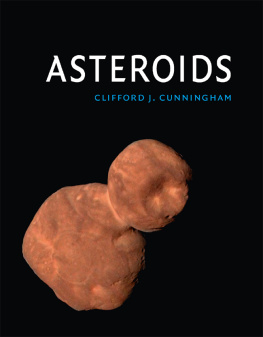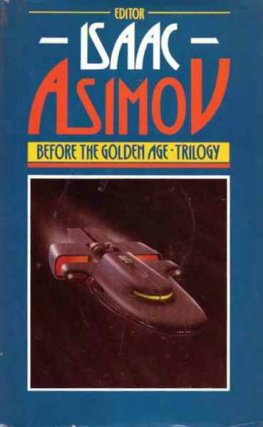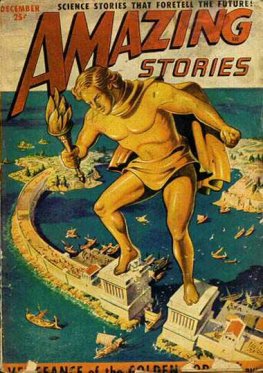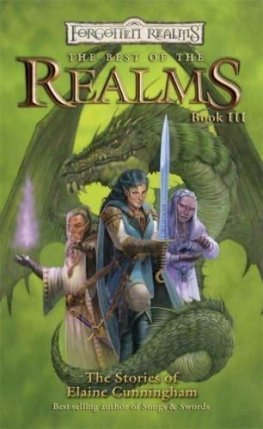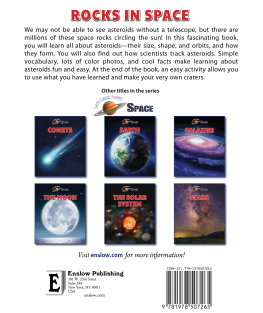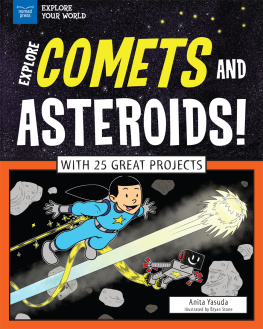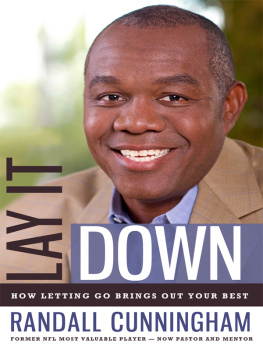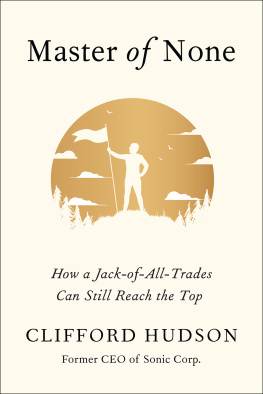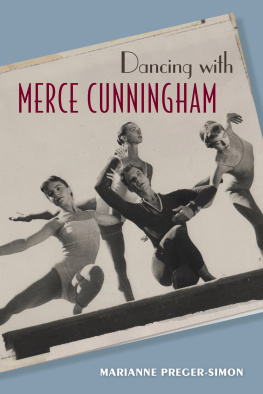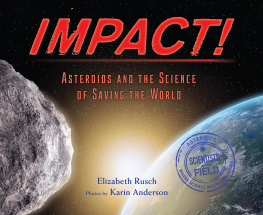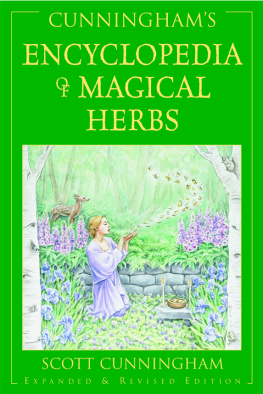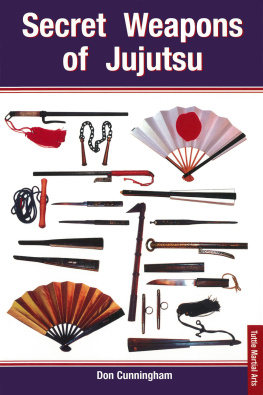Clifford J. Cunningham - Asteroids
Here you can read online Clifford J. Cunningham - Asteroids full text of the book (entire story) in english for free. Download pdf and epub, get meaning, cover and reviews about this ebook. publisher: Reaktion Books, genre: Children. Description of the work, (preface) as well as reviews are available. Best literature library LitArk.com created for fans of good reading and offers a wide selection of genres:
Romance novel
Science fiction
Adventure
Detective
Science
History
Home and family
Prose
Art
Politics
Computer
Non-fiction
Religion
Business
Children
Humor
Choose a favorite category and find really read worthwhile books. Enjoy immersion in the world of imagination, feel the emotions of the characters or learn something new for yourself, make an fascinating discovery.
- Book:Asteroids
- Author:
- Publisher:Reaktion Books
- Genre:
- Rating:3 / 5
- Favourites:Add to favourites
- Your mark:
- 60
- 1
- 2
- 3
- 4
- 5
Asteroids: summary, description and annotation
We offer to read an annotation, description, summary or preface (depends on what the author of the book "Asteroids" wrote himself). If you haven't found the necessary information about the book — write in the comments, we will try to find it.
Asteroids — read online for free the complete book (whole text) full work
Below is the text of the book, divided by pages. System saving the place of the last page read, allows you to conveniently read the book "Asteroids" online for free, without having to search again every time where you left off. Put a bookmark, and you can go to the page where you finished reading at any time.
Font size:
Interval:
Bookmark:


K OSMOS
A series exploring our expanding knowledge of the cosmos through science and technology and investigating historical, contemporary and future developments as well as providing guidance for all those interested in astronomy.
Series Editor: Peter Morris
Already published:
Asteroids Clifford J. Cunningham
Jupiter William Sheehan and Thomas Hockey
Mars Stephen James OMeara
Mercury William Sheehan
The Moon Bill Leatherbarrow
Saturn William Sheehan
The Sun Leon Golub and Jay M. Pasachoff
REAKTION BOOKS
Published by Reaktion Books Ltd
Unit 32, Waterside
4448 Wharf Road
London N1 7UX, UK
www.reaktionbooks.co.uk
First published 2021
Copyright Clifford J. Cunningham 2021
All rights reserved
No part of this publication may be reproduced, stored in a retrieval system, or transmitted, in any form or by any means, electronic, mechanical, photocopying, recording or otherwise, without the prior permission of the publishers
Page references in the Photo Acknowledgements and
Index match the printed edition of this book.
Printer and bound in India by Replika Press Pvt. Ltd
A catalogue record for this book is available from the British Library
eISBN 9781789143591
W hen I first became interested in asteroids, sometime in the early 1970s, there was very little literature available on the subject. Even among the professional community, there was little interest in them. Research papers were few and far between, and mentions in popular publications were practically non-existent.
Fast forward fifty years and asteroids are hot! We now know that asteroids hit planets, sometimes catastrophically. Mankind owes the fact that it is the dominant life-form on this planet to an impact that wiped out the dinosaurs. Studies of the distribution of the orbits and sizes of asteroids give us clues about the dynamics of the early solar system and the effects of accretion versus collisions as a process for forming objects. We have discovered objects in locations that were unknown fifty years ago: some always closer to the Sun than Earth; asteroids that revolve about the Sun in the opposite direction to the major planets; objects that orbit entirely beyond the orbit of Neptune; and celestial bodies whose appearance lies somewhere between the starlike asteroids and the fuzziness of comets. Amateur astronomers in the 1980s and early 1990s were able to discover many new asteroids, but large professional observing programmes, intended primarily to find the objects that might hit us in the future, then swept up those that could be found by amateurs. Many of them switched to observing light curves to determine rotation periods and spin directions. Space probes have flown by or orbited more than a dozen asteroids, changing our view of them from mere points of light in a telescope into worlds in their own right. And more missions are planned.
I have been involved in tracking asteroids and comets professionally for thirty years, with another ten years before that as an amateur. Since 1990 I have seen the observational activity on asteroids increase from roughly 50,000 observations a year to more than 20 million. In 1990 we were tracking about 5,000 objects. We now track almost a million. That has been a challenging data management and computation problem.
Clifford Cunningham has written on asteroids for more than thirty years, with a special interest in the history of asteroids. This interest evolved into his PhD topic: a study of asteroids in England in the early nineteenth century. His more scholarly publications include a large number of volumes based on translations of correspondences between numerous early nineteenth-century astronomers on the topic of you guessed it asteroids.
Will this book tell you everything you need (or would want) to know about asteroids? No, that is not possible in a book this size. But it will hopefully whet your appetite to learn more. Enjoy.
Dr Gareth Williams, former Associate Director,
Minor Planet Center
A steroids are quirky. Just consider the title of this chapter. It comes from a chapter title of an 1877 book by William Oxley of Manchester in the north of England. His book was as far removed from science as it could possibly be. Are you a stranger? asks someone known as the Recorder. I have lived on the planet Ceres, is the response. I am not a departed Spirit, but am an inhabitant of that planet you call Ceres. The answer is so preposterous that one can easily miss the two dramatic assumptions it contains: first, the belief, widespread in the nineteenth century, that other celestial bodies (including asteroids) can be inhabited; and second, that Ceres is a planet.
The simple question what are asteroids? has no simple answer. Are they at least partly metallic objects orbiting the Sun between Mars and Jupiter? Are they dead comets? Are they objects in the outer solar system that were subject to weathering by liquid water? Are they interstellar visitors? Are they companions of the planets, following or leading the planets in the same orbits? Are they pristine objects from the origin of the solar system? Asteroids are all these things and more, making them the most interesting and diverse diminutive objects in the solar system.
In essence asteroids are small objects, composed of silicates or metal, that can be found throughout the solar system. Comets are composed of silicates and ice. The major distinguishing factors between asteroids and comets are their source regions and the presence, or lack, of ice and frozen gases. Meteorites typically originate from either asteroids or comets, although a few come from the Moon or Mars owing to impacts on their surface by asteroids, meteoroids or comets. When they survive the descent through Earths atmosphere, they are termed meteors. Asteroids, comets and meteors are now collectively known as small bodies.
The key word here is small. They are also called minor planets or, in French, petites planetes and, in German, kleine Planeten. The International Astronomical Union (IAU), which prefers minor planet to asteroid, developed the unattractive designation dwarf planet to encompass the largest of these objects. Thus Ceres, the first asteroid discovered, has in the twenty-first century assumed the guise of a dwarf, cut from the same cloth as Pluto. The very suitability of the (IAU) (whose membership comprises some 14,000 professional astronomers worldwide) to vote on and adjudicate such matters as designating Ceres and Pluto as dwarf planets is still hotly contested by many of those astronomers.
It was Giuseppe Piazzi and his assistant Niccol Cacciatore who discovered Ceres on New Years Day 1801. Never before has a century been inaugurated with such an epoch-changing astronomical event. But on that evening, neither man knew they had just made a major discovery. Piazzi saw through his astronomical instrument atop the Royal Palace in Palermo a star which his assistant duly recorded. It was part of their grand effort to create an improved star catalogue and for this a special kind of telescope a vertical circle was essential. Accuracy was also necessary, and for this purpose Piazzi had commissioned Jesse Ramsden in England to make a circle with a diameter of 1.5 m (5 ft). It was the best such instrument in the world.
Font size:
Interval:
Bookmark:
Similar books «Asteroids»
Look at similar books to Asteroids. We have selected literature similar in name and meaning in the hope of providing readers with more options to find new, interesting, not yet read works.
Discussion, reviews of the book Asteroids and just readers' own opinions. Leave your comments, write what you think about the work, its meaning or the main characters. Specify what exactly you liked and what you didn't like, and why you think so.

